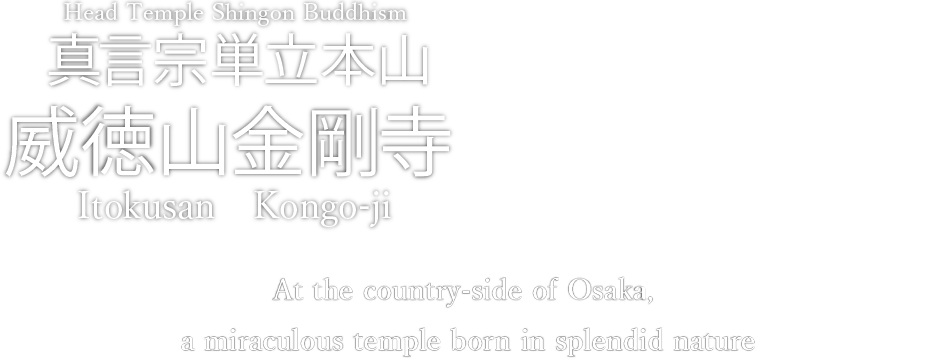

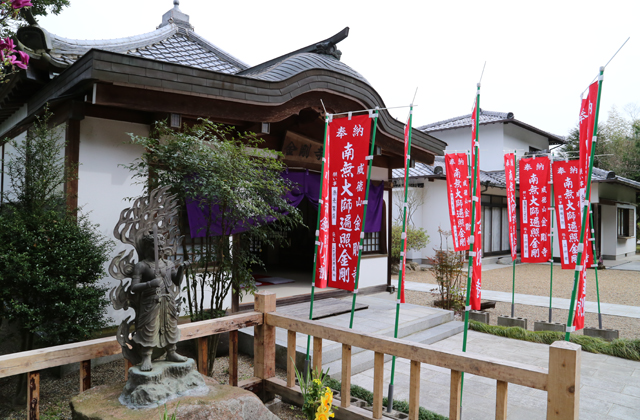
Looking up to the teachings of the Shingon Sect by Kūkai, the grand master who propagated Buddhist teaching and founded the Shingon Buddhism, the temple was founded as a base dojo for Buddhist practice.
The intention of Kūkai`s teachings is to create a world where each and every living soul is the same without any differences and where happiness is reality.
His teachings tell that through changing our selfishness into love and affection for others, the world will turn into the splendid world of Buddha.
Based on these thoughts, we proceed to pray for the happiness of people every day.
There are times where every human can unintentionally feel the closeness of Buddha.
Busy everyday life, exposing oneself to the competitive society day after day…
It is rare, but I think there are many people who have felt like they are being led by “something” like the benevolence of Buddha somewhere out of eternity.
Being born in 1939, the memories I have left from my childhood around the age of 4 or 5 are of fleeing from air-raids in the middle of the Pacific War. Even those memories are not very clear, but what I remember very clearly is the “warmth of the warm hands” of my sister, that pulled me at the times when the alarm rang and we ran to the air-raid shelters.
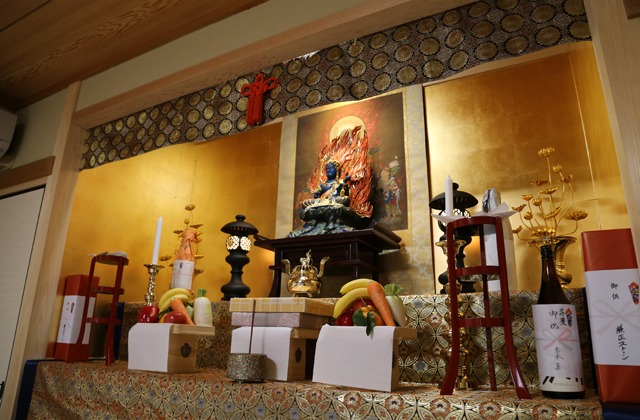
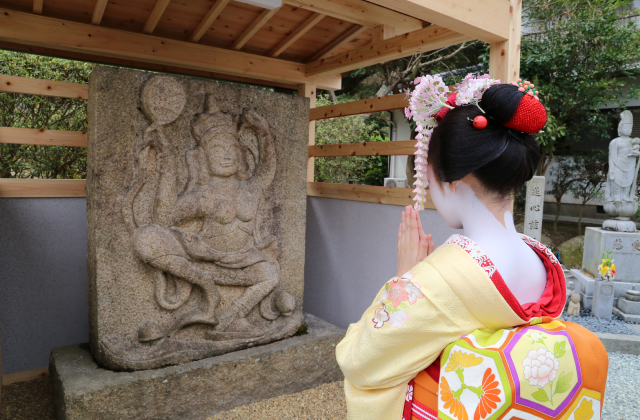
I learned of her death was long after the memory mentioned above. On her way to evacuation at the house of relatives in the Yamaguchi prefecture, she had become a victim of the horrible atomic bomb while passing through Hiroshima.
After the war, times of confusion, times of restoration… Due to bad luck the lumber merchant’s family business went bankrupt. I gave up on going on to a higher school and gave everything to help rebuild our house. Eventually, we were able to revitalize Yamada Ironwork constructions (now Yamada Construction Perfoem Co.,LTD.) .However, when Japan started to grow rapidly once again, my parents cried and began to speak of their feelings: ‘Our lives were saved, and therefore were able to achive happiness to a certain degree. But thinking of Michiko(my sister) such a pity of what she suffered’.
I was shocked then to realize that I had forgotten about my sister. I then was told that originally, I was also to go with my sister to Yamaguchi prefecture. However, I had developed a fever before leaving and my sister had went alone.
Innocent and without ever getting the change to bloom, she ended up as a ten years old blossom. Her body had not been defined and being just a traveler her name did also not appear on the lists of the bomb victims of Kurao Hiroshima. While flipping through all the far and young memories connected to my sister, I kept looking with all my heart for traces of her inside my heart and mind.


Receiving support from many people, her body was miraculously found and brought back to us. Furthermore, her name was added to the names of the victim`s list.
“I thought “The innocent soul of my sister should meet its demands” and there were people who advised and encouraged me like so. Through founding the Itokusan Kongo-ji, I was finally able to build a memorial for her even if it is a modest one. And I now feel that my memory of my sister’s warm hands has guided me all this way.
After that, my parents also passed away to the land of Buddha and I allowed myself to add their graves to the grounds of Kongo-ji.
Today, I still pray at Kongo-ji from time to time. I go back there to fold my hands in prayer before the Buddha at difficult times when I have to make decisions at work or when I feel I have my lost my way.Doing so helps my heart to calm down and to feel myself and my place inside the eternity of life, so that I can keep the presence of mind. Being in the world of humans and leading a daily life far from the land of Buddha, praying I start to wonder “what is this peace?” and a natural feeling of gratitude emerges.
Every bit of peace started with the “warmth” of the hands of my sister who had to die young. If everyone can feel this peace only even a little and experience peace of mind while praying, that will be a piece of unexpected “Happiness” for me.
Yours truly
Goma Prayer is originated from Brahmanism, and was absorbed in vajrayāna=an esoteric Buddhism.
The ceremony is one of the most powerful prayers and austerities. The prayer writes his/her name and wish on a wooden board called ‘Homagi’. The ascetic throws the Homagi into a burning fire, hoping for the wish to be granted by god in heaven. Many temples in areas like Tibet and Japan where esoteric Buddhism is prosper holds this Homa Prayer, fulfilling peoples wishes to save them.

The Kongo-Seiiki (Kongo-Sanctuary), is the holy space of the Kongo-ji. Separated fromthe Main hall and Goma hall, we placed benevolent Buddha statues and objects to worshipin one part of the site. In the centre lays a flagstone in a shape of a Hexagram, which has ameaning to gather the power of the universe.
To begin with, ‘Kongo’ means Diamonds. Beautiful and firm above anything, and aneverlasting existence, it is often represented as a symbol of Buddha in esoteric Buddhism.
The space where all the power of Buddha assembles is the Kongo-Seiiki (Kongo-Sanctuary).
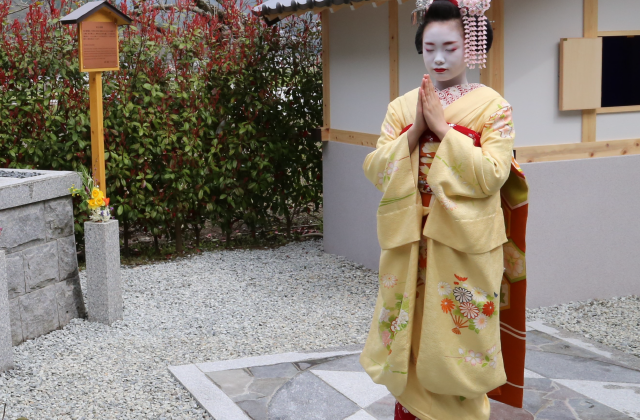
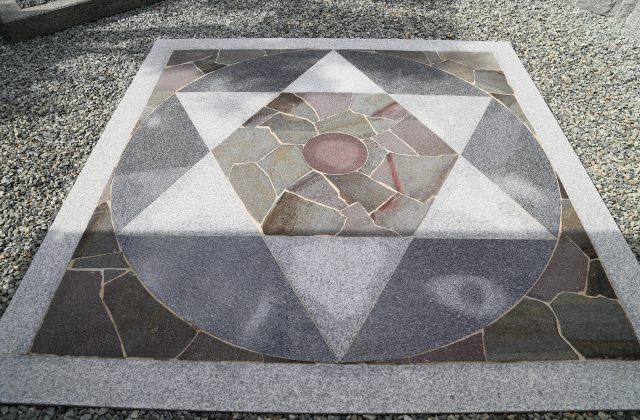
From the ancient religion times, the Hexagram has been treasured as a symbol to drawthe power of gods. The mark is often seen in the sanctuaries of major religious groups suchas Judaism, Christian, Islam and Buddhism It is also known to have been used for magicand black arts, but that clearly shows the holdover from ancient religions. Its inestimablespiritual power is famous from old times.
In Japan, it was called ‘Kagomemon’ and the shape can be found on the lanterns of Ise-Jingu and other old temples. In Japan, it was mainly used for a sign of amulet.
In our temple, we have placed the stone Hexagram in the centre of the Kongo-Sanctuary. It is placed there so that when a person stands in the middle of the stone, he/she may receive all the power from Buddha and the universe.
If you come and visit our temple, do stand in the centre to feel the blessing from Buddha.
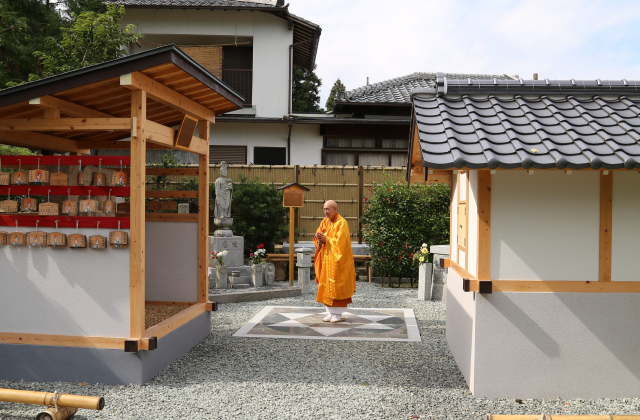
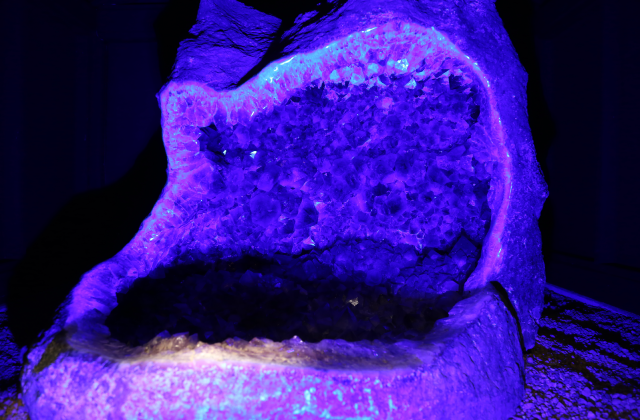
Amethyst is the king of power-stones known also being treasured by the royal families of ancient Egypt. Its different term is ‘Guardian Stone of Love’, and it is believed to hold the power to awaken one’s heart of love and affection, leading love to be fulfilled. It is also believed to be effective for good health and succeeding in business, and has long been worshipped as an object of faith all over the world.
Apsara is a female spirit of India, known widely in Southeast Asia. The statue symbolizes the ‘Spirit of Water’. In Japan, it reformed its figure as ‘Suiten-San’, and has been believed in from the ancient times. ‘Suiten-san’ is the guardian of water, and known to hold the power to prevent water accidents. It is also loved and worshipped by people with jobs related to water, nightclub business, as well as artists and entertainers.
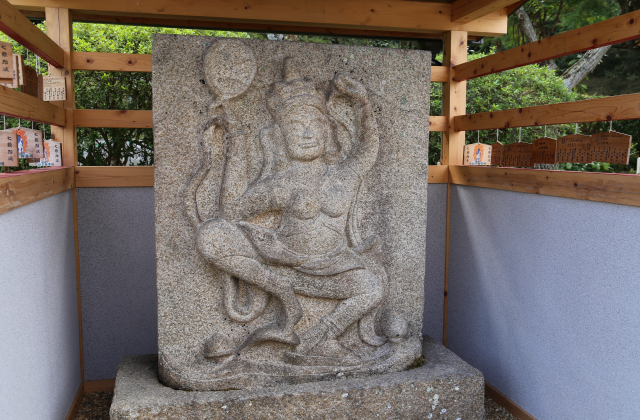

Kannon, is the Bodhisattva of Mercy. According to the Kannon sutra, it is said to form into 33 different figures and is always by our side, and extends a lending hand when in need of help. This statue is the ‘Jibo-Kannon’ expressing the love of a mother towards its child. It is a Kannon protecting children.
Those who have outlived their child worship Jibo-Kannon as a ‘Mizuko-kuyo’ or a repose of its souls, as it is known to tender and protect the infants in heaven.
Kobo Daishi, Kukai is the founder of Shingon, who spread the esoteric Buddhism in Japan during the Heian period. This statue is known as the Daishi of Training, and it is the figure of when Kukai itinerated in the Shikoku area and around Japan, propagating his precepts and building temples along the way, relieving many people. He is still endeared among many people, and is an object of faith.
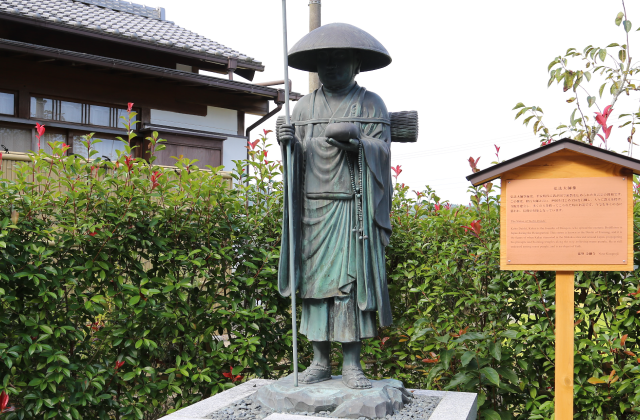
Contact us per telephone: TEL.072(737)1439
E-mail: info@kongozi.jp
